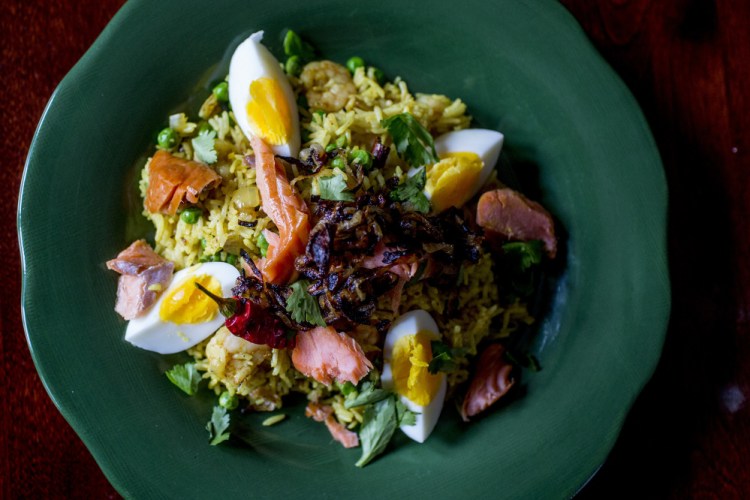Mondays didn’t start out as meatless. In 1917, when Herbert Hoover was head of the then brand-new United States Food Administration, he wanted to make Tuesdays meatless and Wednesdays wheatless in order to feed wartime America and its allies.
In the face of steadily rising food prices, public pressure for the government to lower them and a weak wheat crop that year, Hoover told the Senate he would “mobilize the spirit of self-denial and self-sacrifice in this country.” In lieu of rationing, Hoover (figuratively) reached into every kitchen in the country and asked housewives to sign a pledge to conserve food, David M. Kennedy explains in his book “Over Here: The First World War and American Society.” It worked: 11 million families signed up to participate in Meatless Tuesdays and Wheatless Wednesdays at the tail end of the war and for several years after it. Records show that between 1918 and 1919, there was a 15 percent reduction in food consumption.
Patriotic offset days like these, when you cut back on one type of foodstuff once in a while for a drop in widespread consumption over time, waned once the World Wars ended, and so did motivation. Industrial agriculture took off and 24-hour grocery stores firmly took hold. A meatless offset day came back into vogue in 2003, when a doctor at Johns Hopkins Medical Center in Baltimore reignited it as a campaign for better personal health. Monday was selected as social studies showed that it was widely accepted as a “fresh start” day for dietary regimens.
Most recently, Meatless Mondays have gained worldwide traction as a way to lessen the toll that meat production takes on the environment by reducing the water required to raise livestock, cutting greenhouse gas emissions tied to meat production and reducing dependence on the fossil fuels used to process and transport meat to our plates.
With meat coming off more tables on Mondays, I started toying with other alliterative offset day campaigns that could also impact sustainable food production. Try-It Tuesdays could open palates to a wider range of local vegetables. Local Wheat Wednesdays could remind current generations that Maine used to be considered the country’s bread basket. Thrifty Thursdays could spur cooks to turn to the leftovers in their fridge for dinner instead of a take-out menu.
Given that I grew up eating fish on Fridays, mostly cod, that was an obvious pairing, as long as I opt for species deemed sustainable by local outfits like Gulf of Maine Research Institute and Maine Sea Grant. (See recipe.)
The next day in my sustainable week would be Shop Thoughtfully Saturday. I sort of copped that one from Hoover too. There is a photograph of a poster in the Library of Congress printed by the Food Administration circa 1915 that outlines the early 20th century food conservation mantra in six simple steps. Food, it reads, is best when it is home-grown, but if it’s bought, it should be bought with thought and cooked with care. A cook should serve just enough, save what will keep and eat what will spoil. Communal Soup Sundays (as I espoused in my Jan. 31 column) could encompass pretty much every one of the tenets that made Hoover’s campaign a success.
And that brings us back to Monday.
Christine Burns Rudalevige is a food writer, a recipe developer and tester, and a cooking teacher in Brunswick. Contact her at cburns1227@gmail.com.
Send questions/comments to the editors.



